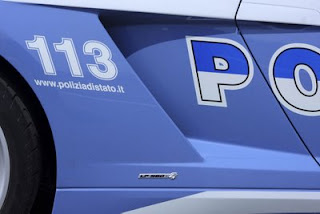

The Town Car is Lincoln’s full-size luxury sedan with traditional Lincoln luxury, V8 power, and rear-wheel drive. For 2003, the Lincoln flagship was redesigned with a more formal exterior and a new frame and suspension designed to improve ride and handling.
While it's no sports sedan, the more powerful new Town Car can be safely driven fast—thanks to a new frame, steering system and front suspension. There also are brake system upgrades and rear suspension improvements.
The front frame rails now are fully boxed sections of hydro-formed steel, which is lighter and stronger than the old frame's welded steel channels. The new rails are filled with structural foam in key locations to help control dissipation of crash energy through the frame for better offset collision performance.
Improved SteeringThe stiffer frame helps handling. So does the new rack-and-pinion steering, which replaces the older model's less precise recirculating ball steering gear. Steering effort is low at parking speeds and rises progressively as speed goes up.
The front suspension has a more robust design with such items as upgraded shock absorbers to improve handling.
A revised rear suspension also allows better handling and reduces transmission of road impacts into the car's structure. That suspension has a stabilizer bar, and load-leveling air springs maintain a constant ride height, regardless of vehicle load.
There is a more powerful 4-wheel anti-lock brake system with a new booster that provides a "panic assist" during fast stops.
More PowerHorsepower has been increased by 19 to 239 for lively acceleration, and the 4.6-liter overhead-camshaft V8 works with a responsive automatic transmission, although it's only a four-speed unit. A more modern 5-speed automatic would be appreciated.
Fuel economy is pretty good for such a big car that weighs 4,308 to 4,467 pounds: an estimated 17 mpg in the city and 25 on the highway.
The interior offers plenty of comfortable room for four big occupants, although the rear-drive system's driveline tunnel eats into room. The big trunk has a better shape and also a lower, much wider opening.
Traditional V8 SoundThe interior is quieter, although Lincoln has tuned the intake and exhaust systems to let the traditional sound of a powerful American V8 be heard during hard acceleration.
The revised instrument panel looks a little too flashy and gauges are harder to read. At least the dash has a classy analog clock. Dashboard controls for the sound system and climate controls are too small, although there are steering-wheel-mounted speed control, climate and audio controls. Among other new items is a dual-zone climate control system.
The new Town Car isn't as dashing as the 1930s American luxury cars, but can easily outperform the best of them.
 Technical Specs
Technical Specs


































